Edmontonian Laura Creswell pays roughly $950 a month for housing expenses. That covers her mortgage payment, condo fees, home insurance, parking stall and internet.

The reason the 25-year-old is able to keep her living costs so low, and squirrel away up to half her paycheque: She’s part of a growing number of Canadians buying “tiny homes.” The small parcels of property have made home ownership more affordable for millennials.
Creswell bought her 335-square-foot bachelor suite, located in Edmonton’s popular Oliver neighbourhood, off Kijiji last fall for $154,000 (a grand below asking price).
“It’s a shoebox, for sure,” she said. “But it’s my home.”
She doesn’t think she’s sacrificing anything by living in the small space, which she spent $15,000 to furnish. It’s surprisingly versatile.
“I can have 10 people over for a movie, I can have six people over for dinner… and I can have a master bedroom in the evening.”
There’s floor-to-ceiling cabinetry (enough for two full-size closets) around her custom-made Murphy bed, and loads of storage space throughout the suite thanks to help from a local carpenter.
“I’m not a minimalist whatsoever.”
“I’ve always wanted a tiny home,” she explained. “I think it’s definitely the future of sustainable housing especially when it comes to my generation.”
Her job as a civil environmental engineer would afford her a larger living space, but Creswell has “no aspiration of owning a house.” She’d rather spend her money on traveling and saving up for an early retirement, “without working 80-hour weeks.”
Creswell’s choice has been tough for some (i.e. older people) to comprehend.
“There’s this idea that square footage means marketability,” Creswell admitted.
The notion seems so ingrained in the system that some find it tricky to get a mortgage for a tiny home. Creswell even had to pay default insurance, despite putting 20 per cent down.
The CMHC calls this “low ratio transactional mortgage loan insurance,” but insists it doesn’t treat “mortgage loan applications for tiny homes differently than for other dwelling types.”
READ MORE: Tiny homes growing in popularity but looking for place to call home in Canada
Real estate experts have traditionally advised people against investing in one bedroom condos, let alone bachelor units, due to resale value.
The way Creswell sees it, though, is that if she ever wants to rent her condo out it’d be to one person or a couple, the same as with a one-bedroom. Except a one-bedroom would cost her $70,000 more and would double her condo fees and heating bills.
Another perk of her tiny place, she pointed out, is that it encourages her to be out and about enjoying her neighbourhood.
“If you’re both homebodies and introverts you may have an issue.”
WATCH: Tiny homes in Canada
Her tips for maximizing a tiny space
1. Think of the shape of the room.
If you don’t already rent or own one of these micro units, Creswell recommends looking for a place that has a simple, wide rectangular shape.
Ideally the windows would be on the longer side of the rectangle. Otherwise, she says, you’ll end up placing something in front of them, which will block your light and make the space feel smaller.
Also, avoid condos with long hallways because that’s just wasted space.
Creswell looked at a couple places that were up to 200 square feet bigger than her current unit, but felt smaller because of their layout.
2. Think outside the box.
“Sit down and ask yourself what you want in your dream home. You need to build that in or you won’t be happy. You’ll get tired after a year or two.”
For her, a big closet and pantry were important. She watched a ton of YouTube videos before hiring a carpenter to help bring her storage-heavy vision to fruition.
If you’re handy and into DIY projects, she thinks you could probably do most of what she did yourself.
She relied heavily on a free 30-day trial of SketchUp, which is essentially a 3D mapping tool. You put in the dimensions of your home and then when you’re at a furniture store, you plop in the measurements of whatever you’re considering to visualize how it’d fit.
3. Look for furniture that can be used in at least three ways.
Her wide dining room chairs transform into lounge chairs and two twin beds, so she’s able to have two guests comfortably sleep over.
Her desk chairs also double as stepladders. Her coffee table acts as scarf storage as well as a third seat to her pop-down dining room table.
“It’s all how you use it.”


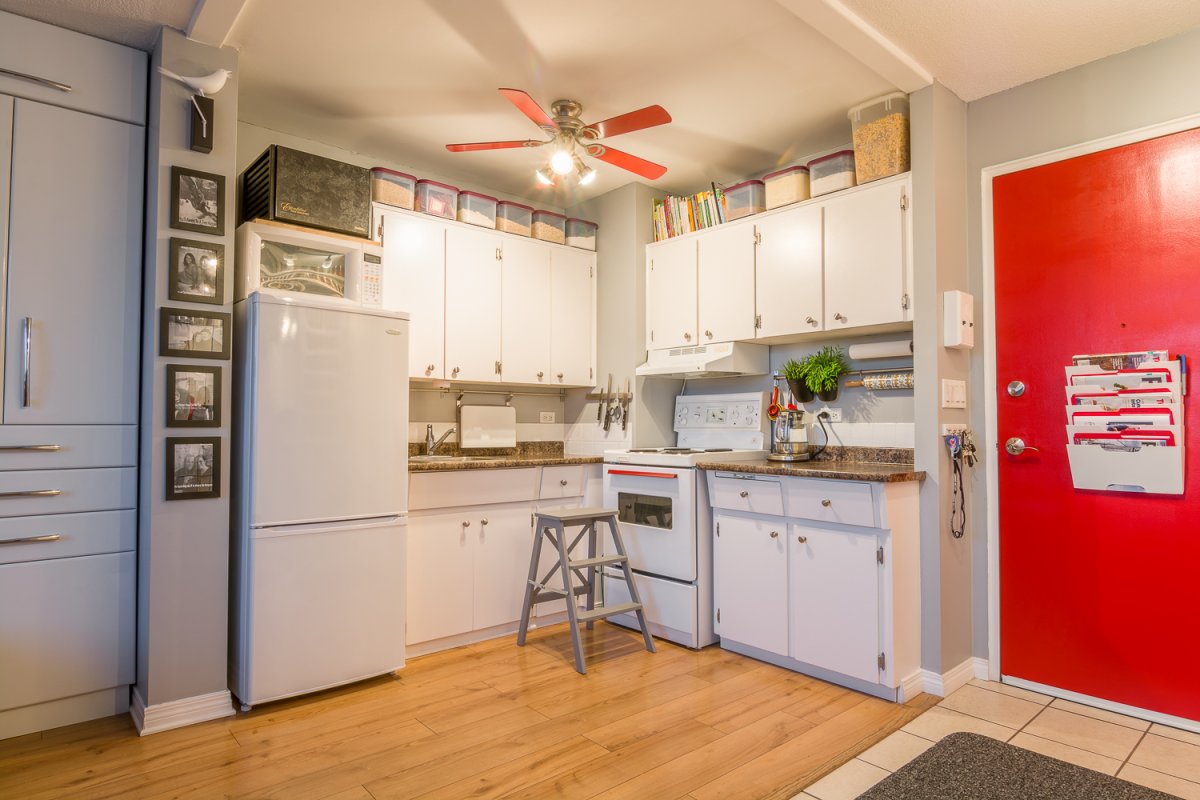







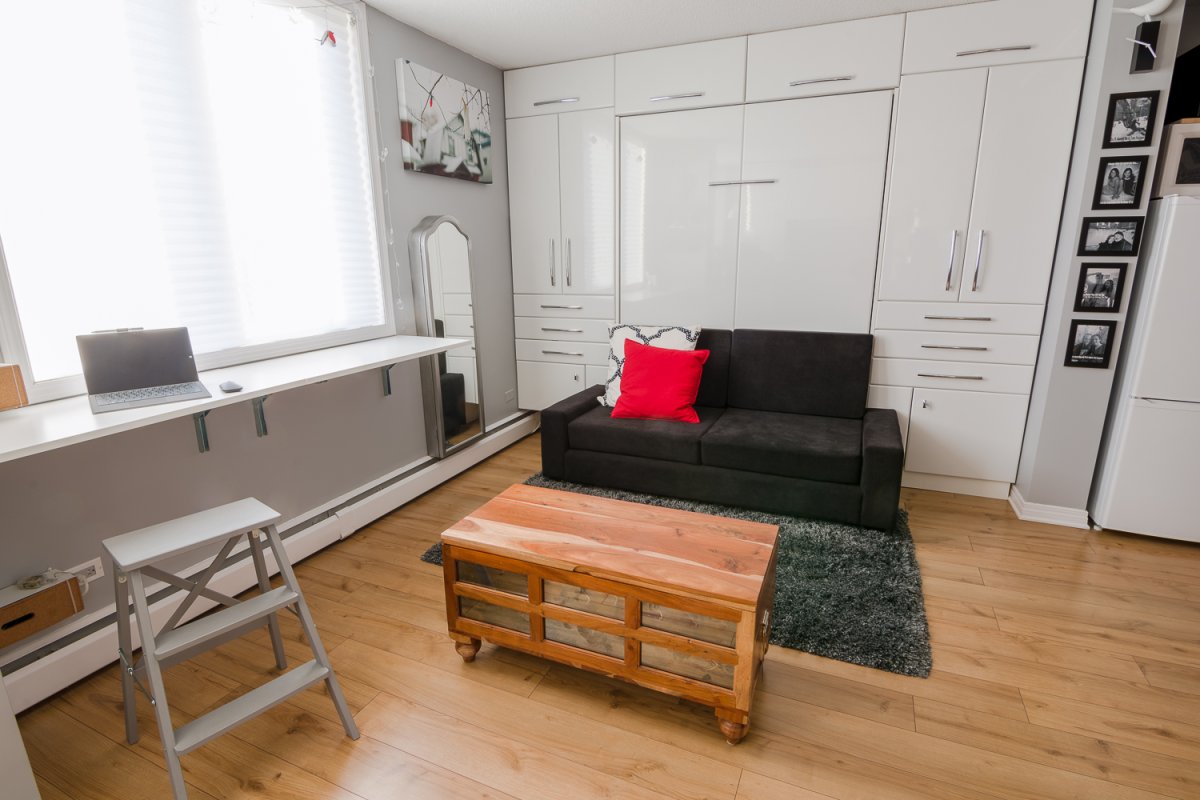





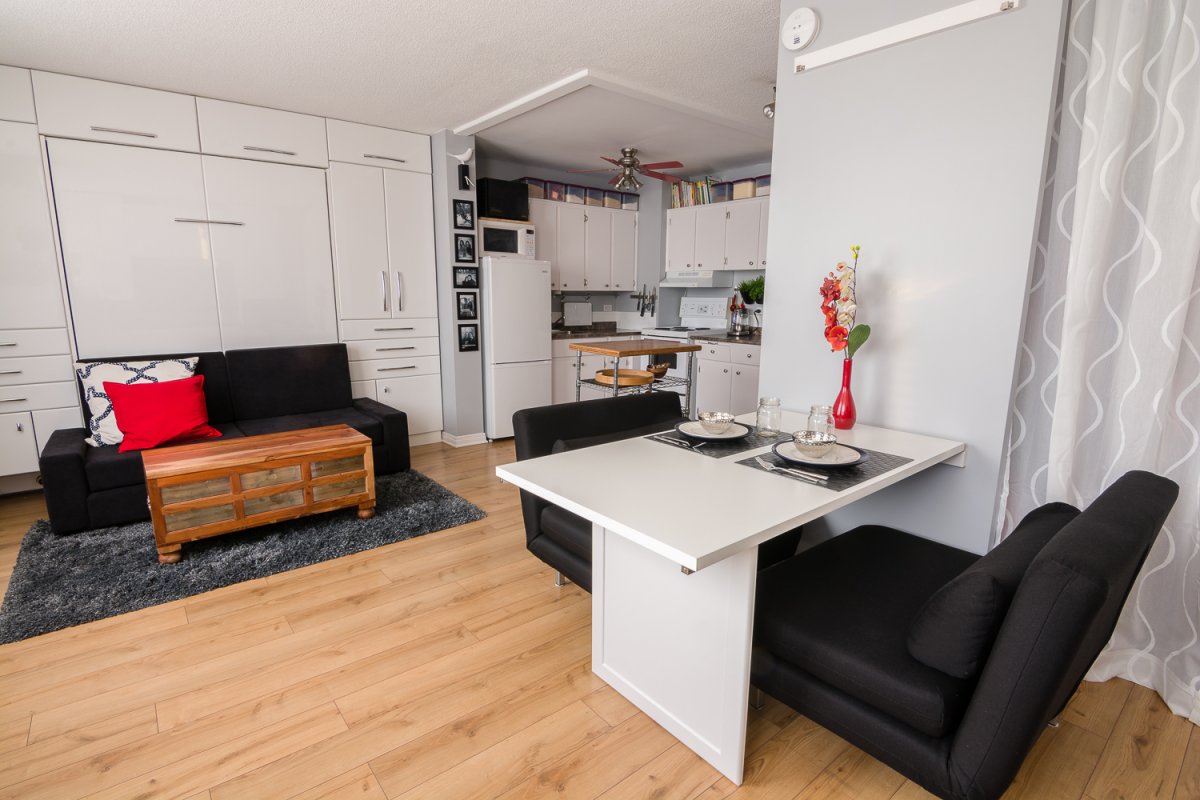

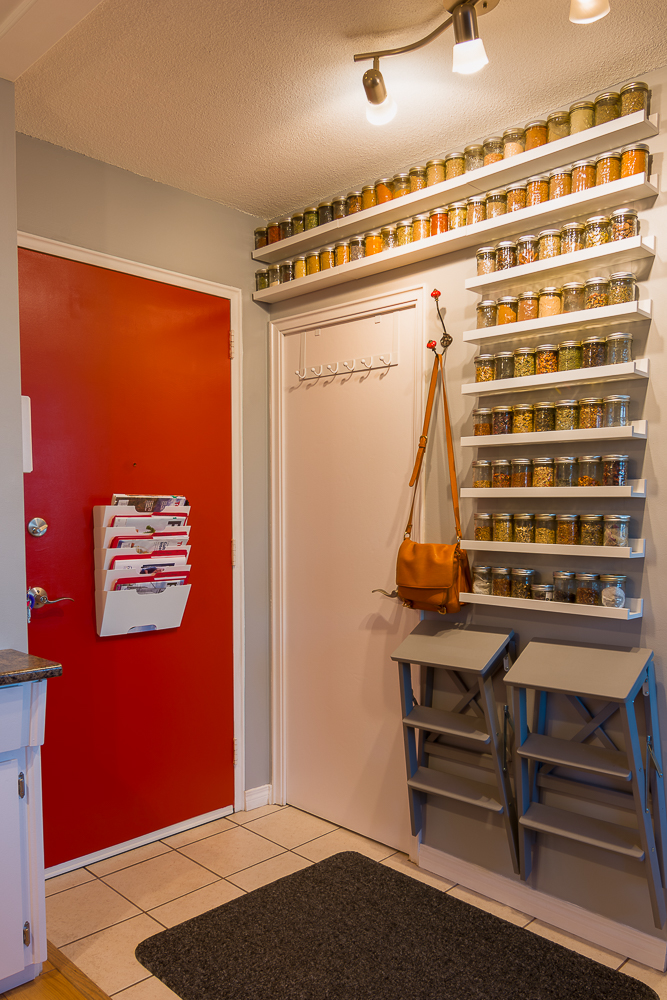





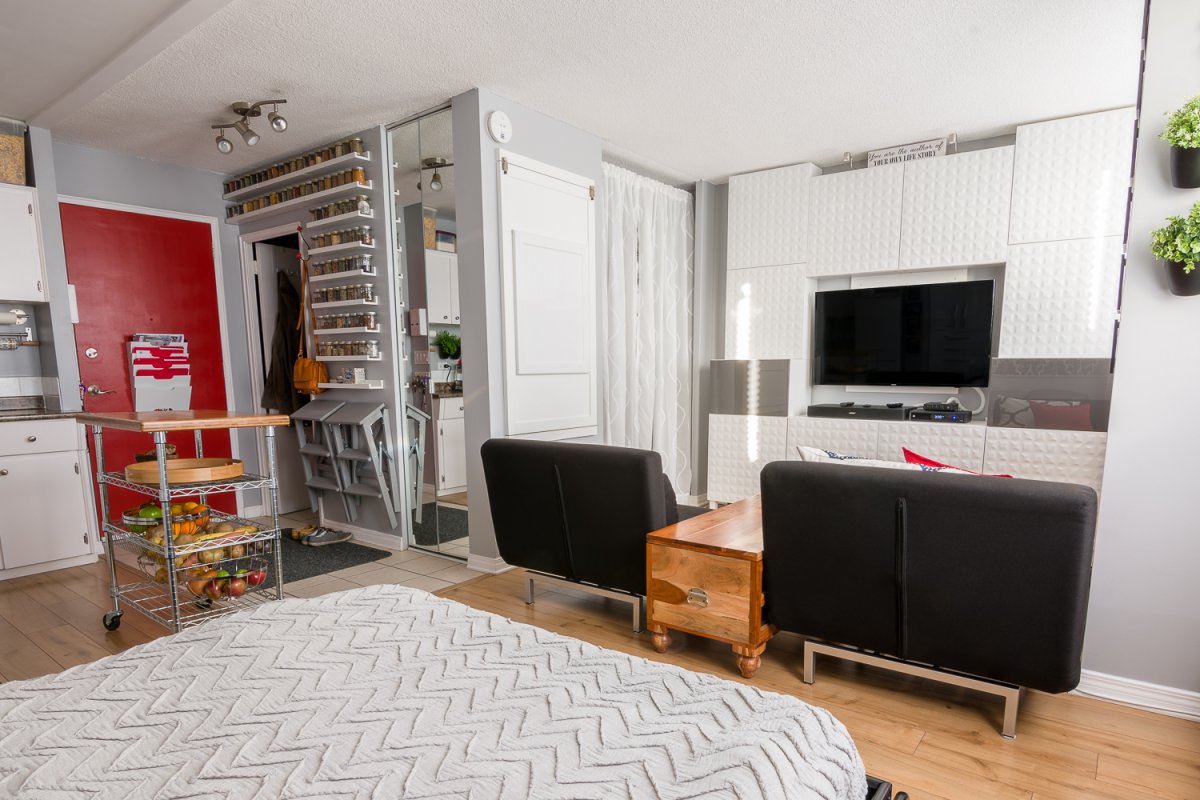

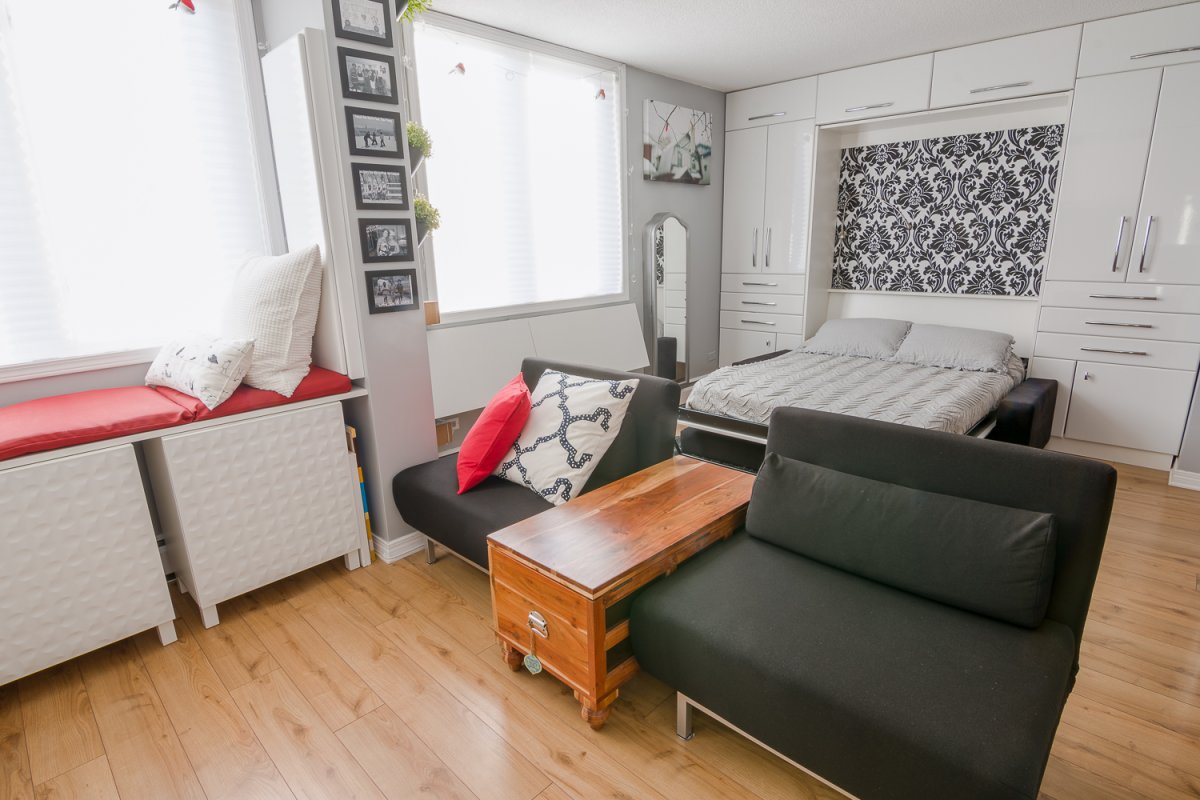
















Comments